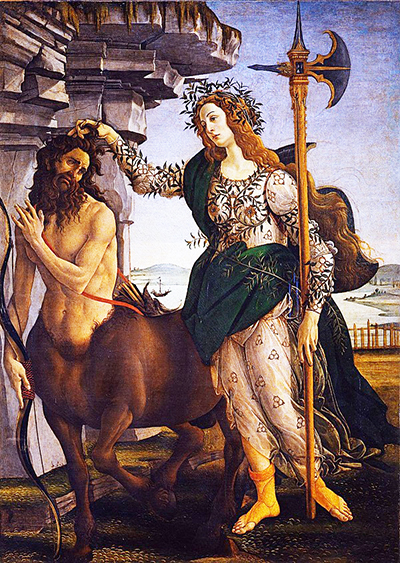Pallas and the Centaur was depicted by Sandro Botticelli in 1482 and now hangs in the Uffizi in Florence, Italy
The majority of Botticelli paintings are oil on panel, but this breaks from the mould in that it was on a large canvas - sized at 205cm x 148cm.
Today's artists predominantly use oil on canvas, but at that time Tempera was the tool of choice. It is still available for sale as a niche selection, like so many other mediums in this age of variety and personal expression.
The significance and beauty of Pallas and the Centaur is underlined by the fact that it was displayed for many years alongside Botticelli's classic artwork, Primavera. The Pierfrancesco family's past documentation mentions the two being placed together in a Florence's city palace.
Sometimes Botticelli would put great amounts of attention to the background in order to add layers of symbolism along with the main focus of the artwork, as seen in Madonna del Padiglione, for example. In the case of Pallas and the Centaur, however, he keeps it very simple and ensures that the viewer's entire focus in on the two figures in the foreground.
It was rare for this artist to produce many study drawings for his large frescos, often amending as he went directly on panel or canvas. In this case, however, we do have supporting evidence in the form of this Pallas figurative sketch that much planning was put into the final artwork.
Pallas Athena, a beautiful armed guard with shield and halberd has captured a centaur who has wandered into sacred land. This mythical scene was to be the last of his Medicean period, moving on from this point to more religious based work which continued until the end of his career. Gustav Klimt, a famous Austrian portrait and Vienna Secessionist would produce another famous interpretation of this symbolic women who oozed virtue.
You will notice Botticelli's decision to place laurel branches on Pallas' head which was not done so in depictions of her by other artists. Perhaps the symbolism is used in a similar way to that of Picasso who many centuries later did the same with his Garcon a la Pipe, having left it out of most of his preparatory sketches.




